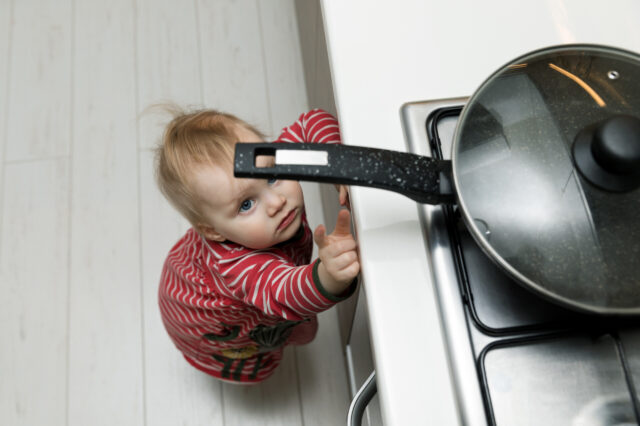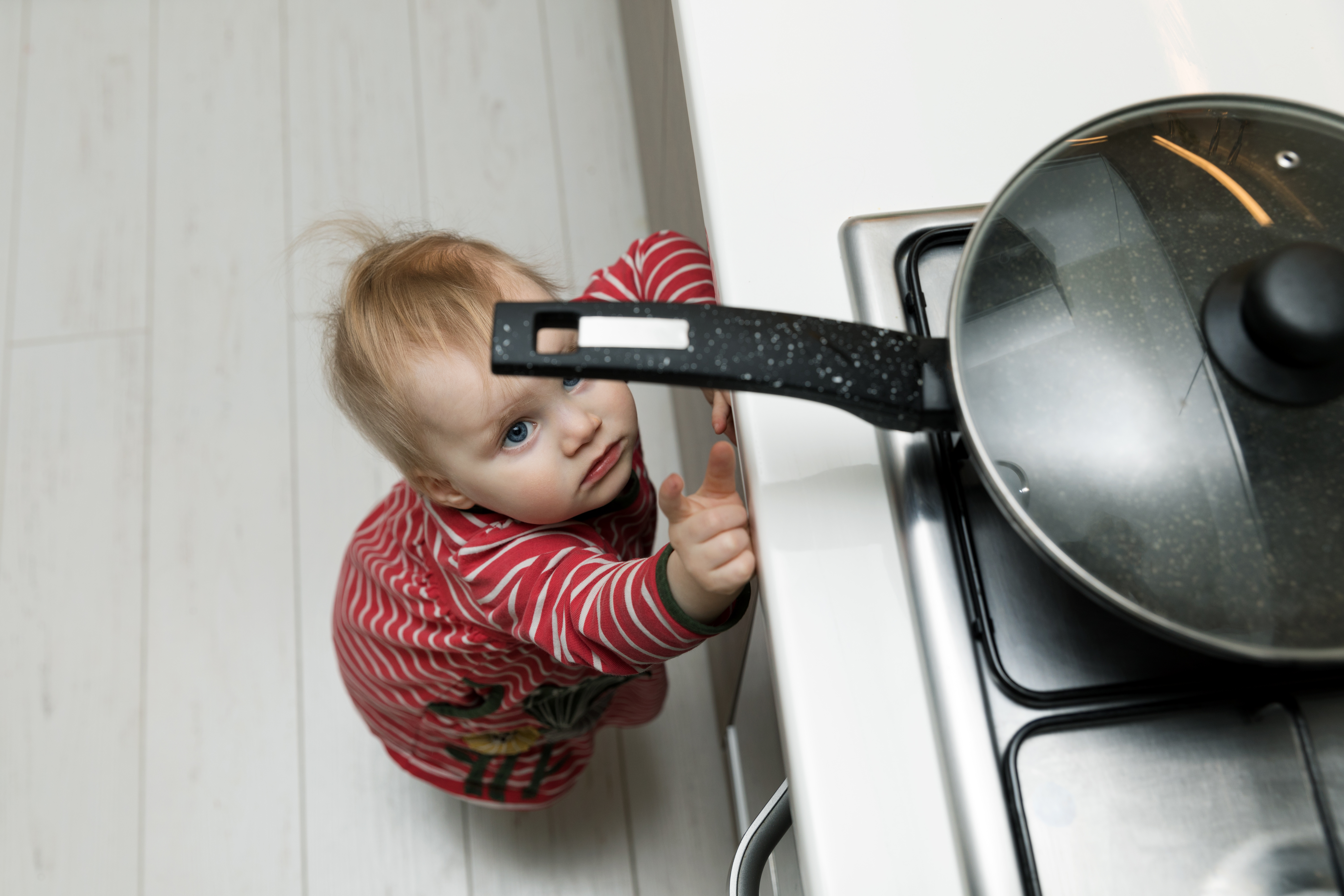Burn prevention and safety tips for kids

Every day, over 300 children (ages 0-19) are treated in emergency rooms for burns and two children die. According to the Centers for Disease Control and Prevention (CDC), over 75% of these burns could have been prevented.
Younger children (<5 years old) are more likely to sustain injuries from scald burns that are caused by hot liquids or steam, while older children are more likely to sustain injuries from flame burns that are caused by direct contact with fire.
A busy household, unsupervised children and outdated appliances are what frequently lead to children getting burned. Below are some common mistakes parents make that can lead to a child being burned and easy steps you can take to help prevent them. 
Scald Burns
- Make sure your hot water heater is below 120°F, bath water should be less than 100°F.
- Always check the temperature of the bath water with your hand or elbow before putting your child in the bath.
- Do not leave young children unsupervised when starting a bath.
- For older children, teach kids to turn on the water starting with cold water first, then slowly add the hot.
- Avoid drinking, cooking or carrying hot beverages or food while holding a child.
- Avoid placing hot drinks in stroller and always use lids.
- Keep children and pets out of the kitchen when you are cooking by using baby gates.
- Avoid putting hot foods or liquids in reach of little hands and make sure they are not under a towel or placemat that can be easily pulled down.
- When cooking on a stove, be sure to turn pot handles towards the back of the stove so children cannot grab them or hit them.
- Always test food temperatures before you give them to your child. Allow anything that was cooked to sit for at least five minutes before eating it.
Contact and Flame burns
Fire and Embers
- Ashes and coals can stay hot for three days after a fire has been put out. Embers that are covered by ashes and sand are no different and remain extremely hot for several days. Make sure to run cold water over fire pits with a hose for several minutes to be sure they are no longer hot. Always stay with the fire until it is completely out.
- Keep water and shovels close by should the fire start to spread.
- Before making fires outdoor, establish a five-foot-wide control line around any barrels and even bigger around open brush fires. The larger the fire, the wider the control line should be. If possible, keep barrels covered with screen to keep materials contained.
- Be sure there are no aerosol cans in burned materials. They explode, cause flame injury and create metal projectiles.
- Never use gasoline to start a fire and store it away from children and tightly sealed. Gasoline produces a vapor that can ignite up to 12 feet away and even float on water. Gasoline can ignite from a spark, flame or even static electricity and instantly turn into a “fireball” with a temperature of 15,000 degrees.
- Install smoke alarms and make sure to change the batteries every 6 months.
Hot household appliances
- Install a barrier or safety gate around a fireplace. Even gas fireplaces that are protected by glass can cause burns when the glass is touched.
- Make sure entire family knows where the fire extinguisher is and how to use it.
- Make sure clothing irons, hair straighteners and steamers are unplugged after use and let them cool off in a safe place out of reach before you store them.
Electrical burns
- Make sure all sockets are covered with childproof covers when not in use.
- Make sure all electrical cords are intact and not frayed and that they are always out of reach of children’s hands and mouths.